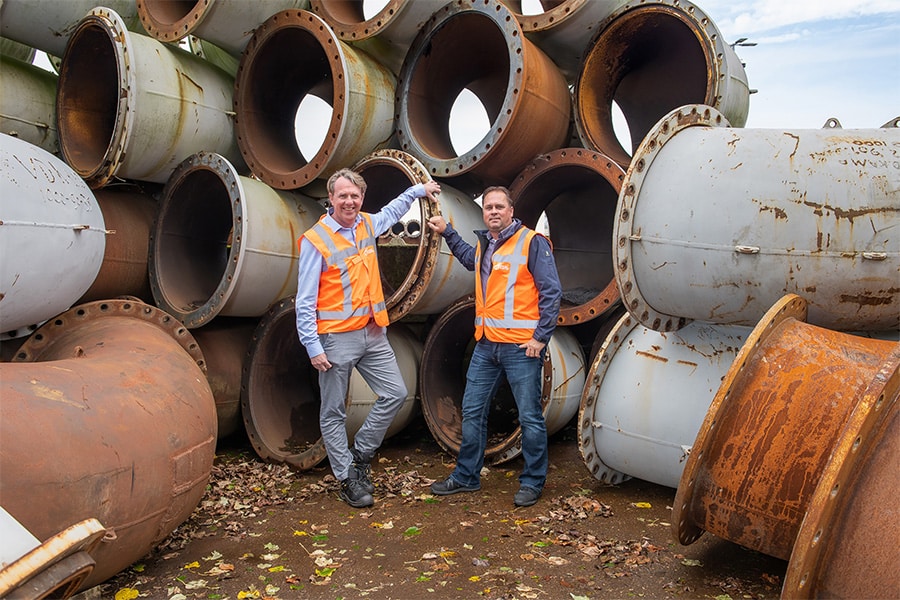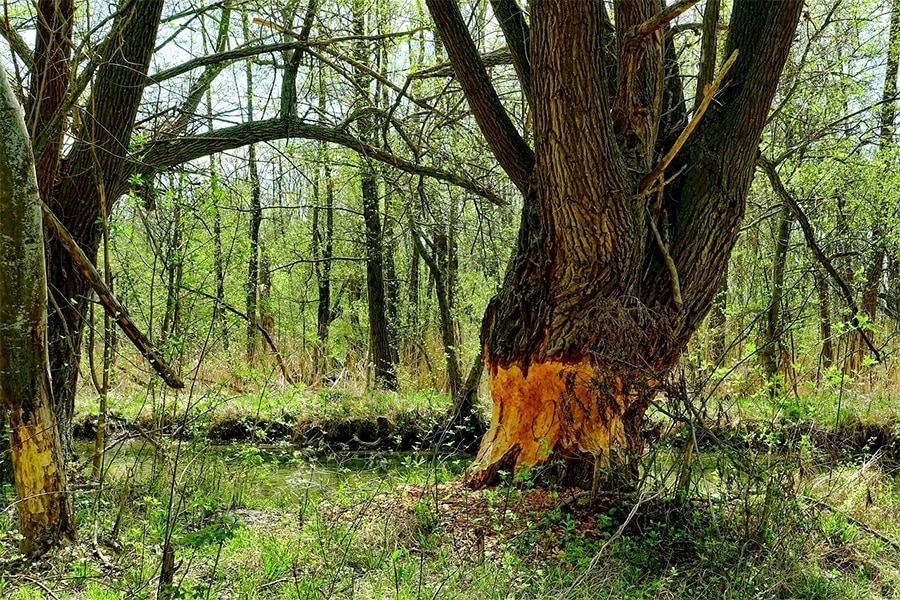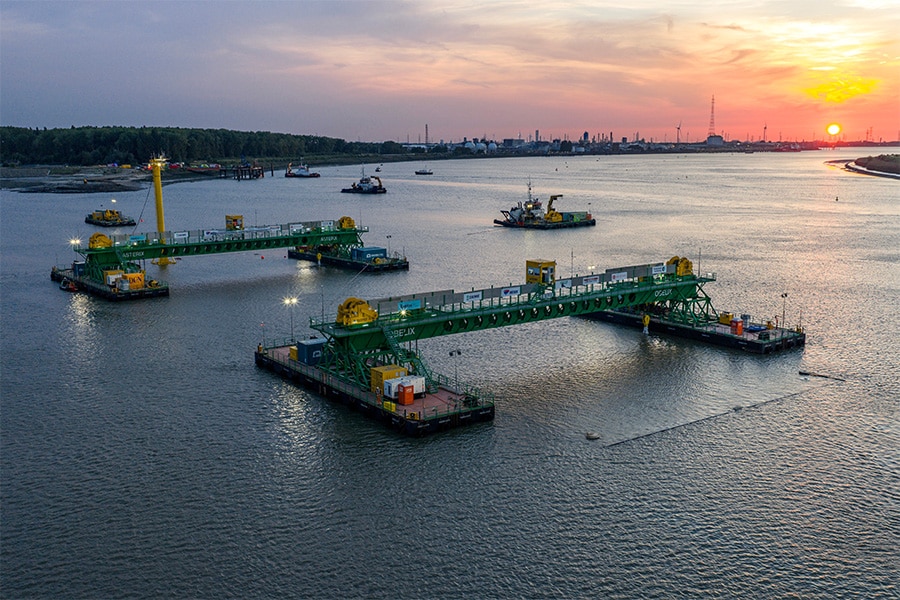
'We always try to get the weakest link in a chain to the next level'
Earlier, we wrote about "predictive maintenance," the practice and planning of maintenance based on techniques that determine condition. A new word for a process based on contemporary technology, including sensor technology and the processing of data via algorithms. Totally contemporary. Yet determining condition and adjusting maintenance accordingly is nothing new. At least, not at Croonwolter&dros.
We talk about this with Guido Koopmans, Manager Maintenance and Eric Schuurman, Project Manager at Croonwolter&dros. "If you look at what the term 'predictive maintenance' means and you peel off the term, you see that this way of working has been used by Croonwolter&dros for a very long time. The ways of measuring, recording and processing data have only changed, thanks to advancing technology," Koopmans opens the conversation.
Reliability of a component is related to operational reliability
Schuurman continues: "There used to be seemingly more robust construction, more forgiving when it came to failure. Nowadays -the last 20 years actually- work is more and more complex. Also more reliable, but with more and more additions. The reliability of a component is related to the operational reliability of the whole. Therefore, when we make component choices, we also include the 'replaceability' factor."
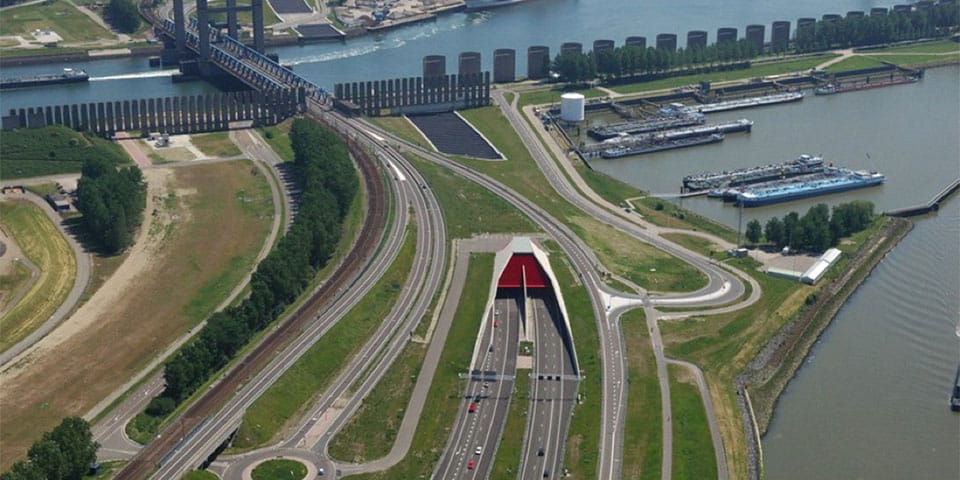
Thomas Tunnel, nicknamed "The Ferrari Tunnel."
The split between innovation and the use of 'proven technology'
Koopmans notes that at times there is a dilemma: "The government asks for innovative solutions on the one hand, but when it comes to reliability, they prefer 'proven technology.' The speed of development in electrical engineering at the moment is enormous, very short cyclical. It is up to us to determine how reliable a newly developed component is and how to fit it into the overall maintenance plan." Schuurman adds, "Knowing that the turnover rate of products is already increasing, we try to select our suppliers on 15-year delivery guarantees in projects. We put this out to our partners from our contract obligations, based on requirements from technology. However, the ideal picture is also utopian, for it would be nice if, with a 20-year maintenance contract, we could also count on 20 years of availability of suitable and working parts. Often, however, a replacement product turns out to have changed so much that readjusting documents, re-engineering and testing are required. We are good at that, however."
Anything that can be done more efficiently, also do it more efficiently
Maintenance is certainly not a static process at Croonwolter&dros. As a frontrunner in innovation, it is always looking to optimize things. Koopmans gives a good example: "Take the topic of cybersecurity. With increasing digitalization and communication via the Cloud, this is a very important topic, also in the field of maintenance. We offer complete cybersecurity scans. After a scan, we work with the customer to see where areas for improvement are and make proposals to quickly and effectively increase security. This is first and foremost good for the customer itself, but also for Croonwolter&dros and the entire Netherlands BV." Schuurman adds, "Information security must become self-evident. Care is needed when you entrust the functioning of systems to the Internet of Things."
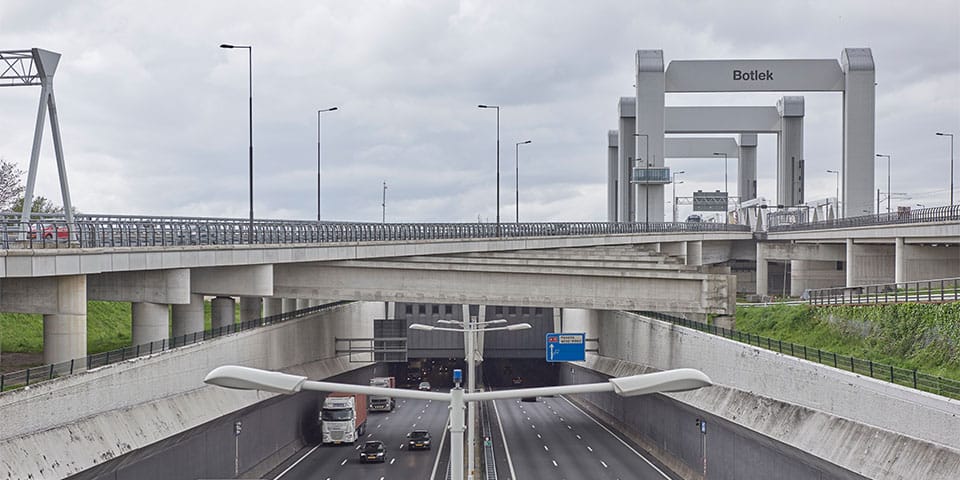
The Botlek Tunnel and the Botlek Bridge.
'Greater Rotterdam,' more a Geuzen name than a working title
Croonwolter&dros has four major maintenance contracts in and around Rotterdam. Internally, the team working on those calls the work "Greater Rotterdam. "That's not an official name, but more of a nickname," Schuurman explains. "It involves four beautiful projects with maintenance as a major component. My own department is servicing the projects. We originated from the A15 renovation project below Rotterdam. 'MAVA' is the name of this project, from Maasvlakte to Vaanplein. Owned by RWS, with for us as client A-lanes A15, for which we maintain our own scope of risk. The project includes the Botlek Tunnel, the Botlek Bridge and the Thomas Tunnel." In addition, Croonwolter&dros is a shareholder for 50% in Sherpa Mos -a combination of Hollandia Services and Croonwolter&dros-which jointly carries out the multi-year maintenance of the Maeslant and Hartel barriers.
As a third project, Schuurman mentions the iconic Maas Tunnel, recently restored. "Croonwolter&dros, Mobilis and Nico de Bont have integrally renovated and restored 'The Old Lady' from the CAM combination. Now we are in the maintenance phase," Schuurman outlines. "And do you know what's beautiful? When I started at the then Croon Elektrotechniek 31 years ago, I was already assigned to renovation work on the Maas Tunnel. Now, 30 years later, I am responsible for maintenance on behalf of the CAM combination. I could never have imagined or even dared to hope that!" 'Connection A13-A16 Rotterdam' is the fourth project within 'Greater Rotterdam' on behalf of the combination "De Groene Boog". Schuurman: "The maintenance is already in the portfolio now, in 2024 when everything is ready we trust to have the entire route in maintenance, just like the A15 and the Maas Tunnel. The four customers we serve with 'Greater Rotterdam' are all equally important. This is also necessary, because only in this way can we establish an appropriate mix of projects and risk profiles to 'man' everything."
Minimizing security risks is paramount
"Our overriding concern is to minimize security risks on all fronts," Schuurman continued. "Safety is anything but self-evident. Everyone must be able to rely on safe traffic, the client, the road user, the road worker and our people. That's priority one with us." Koopmans adds: "We make integral use of experience gained on projects and exchange information among ourselves. Our people must be able to keep their knowledge of a project and the objects up to date. That means they have to make frequent visits to a project. That's why we rotate our people, so it doesn't become a "circle around the church. That way we learn to look more broadly and innovate on a much broader level."
As one of the biggest risk factors in availability, Koopmans cites human error. "We build in safety protocols. For example, at the Maeslantkering. There we have different pumps maintained by different teams, to prevent copying errors. That means smart planning. It's a piece of 'redundancy' on a human level. The Maeslantkering is basically a big robot. On the front end, that's great, because that rules out human failure. At the back, however, it makes maintenance complex. That's why we invest in our people, in their knowledge and skills. Human capital ... it is and remains human work. We always try to get the weakest link in a chain to a higher level."
Heeft u vragen over dit artikel, project of product?
Neem dan rechtstreeks contact op met Croonwolter&dros.
 Contact opnemen
Contact opnemen
